Respiratory physician Lutz Beckert considers chronic obstructive pulmonary disease management, including the prevention of COPD, the importance of smoking cessation and pulmonary rehabilitation, and the lifesaving potential of addressing treatable traits. He also discusses the logic of inhaler therapy, moving from single therapy to dual and triple therapy when indicated, as well as other aspects of management
The greening of health: The bold, the brave and the slow
The greening of health: The bold, the brave and the slow

The health sector has picked away at the problem of global warming. But it’s now crunch time for mass action to reduce the sector’s greenhouse gas emissions. Virginia McMillan checks the temperature
The plastic speculums discarded after one use, the polystyrene boxes and their foam “peanuts” binned after the vaccines have been unpacked, the harmless, used dressings included with the contaminants sent for high-temperature incineration.
You don’t have to look far to see general practice’s large carbon footprint.
At Churton Park Medical north of Wellington, the team sees the irony of the health sector trying to improve people’s health but also emitting a massive amount of the gases that warm the planet.
Wherever possible, they choose low-emissions products with the least packaging. Then, they recycle as much as they can.
One of the practice’s founders, GP Rebecca Randerson, co-wrote a 2010 resource, Toolkit for Greening General Practice, which has subsequently been updated and is available on the RNZCGP website.
For many years, Dr Randerson has lobbied and advised on environmentally sound actions for practices and hospitals. There are workarounds for those pesky polystyrene packs, she says. (See “General practice by the [green] book”, opposite page.)
AT THE TIME Churton Park Medical opened in 2013, the United Nations’ climate science panel believed the world would see a damaging 1.5°C temperature rise over and above pre-industrial times by the end of the century.
Those experts now say we’re halfway there already; without “aggressive action”, The New York Times reports, this increase will come by 2040, well short of the end of the century.
That’s why the NZMA has this month urged the Government to adopt its ambitious greenhouse gas targets 10 years earlier than the proposed 2050. (See “The route for the college...”)
As has often been warned, and as public health doctor and University of Auckland academic Rhys Jones writes in a recent article in the journal Global Health Promotion, the direct impacts of climate change will include death, illness and injury from heatwaves and extreme weather events.1
Dr Jones says the indirect impacts will also be powerful. They include changes in the spread of infectious diseases; air and water pollution; rising sea levels taking out buildings and infrastructure; people being forced to emigrate; and food shortages.
Health impacts are already being seen in Aotearoa. Dr Jones warns that, as these increase, they are a “threat multiplier” for Māori.
He writes that promoting change requires devolution of power to indigenous communities.
Rather than travel in a fossil-fuel-guzzling aircraft, Dr Jones caught the intercity bus to Wellington to attend the Sustainable Healthcare Forum in May.
Delegates were urged not to be pessimistic. “There is time to stop the worst-case scenarios,” said Ann Smith, chief executive of Enviro-Mark Solutions.
But, “because we have left it too late, we have to do more”, Dr Smith said, at the second such event organised by OraTaiao: New Zealand Climate and Health Council (where Dr Jones is co-convenor), and the Sustainable Health Sector National Network NZ.
New Zealand was aiming to reduce gross total carbon emissions; instead, they have risen by 19.6 per cent since 1990. Much of the increase is from fossil fuels burned for transport and industrial heating.
Emissions are still rising, Dr Smith says. “We have 10 to 12 years to stabilise emissions, so we can ‘bend the curve’ so it is not accelerating to an emergency.
“We can’t leave it until one minute before midnight on 31 December 2049.”
That’s a reference to the Climate Change Response (Zero Carbon) Amendment Bill and its date of 2050 for net zero emissions, in line with global climate change deal, the Paris Agreement.
Not long ago, a big emissions reduction was seen by many as unfair for a tiny country. And, until recently, few in government and bureaucracy fought back against this inertia.
There is next to nothing on the subject in the 2016 New Zealand Health Strategy and its “roadmap of actions”.
“Climate change has health and social consequences” is the sum total of the commentary offered.
A “green health” expert told New Zealand Doctor the previous National Government took environmental sustainability off the public service agenda. One move by National was, however, to ask the Productivity Commission to investigate transitioning to a lower-emissions economy.
The commission’s report last year highlighted benefits for health as emissions decline. We can expect better air, water and soil quality, leading to lower mortality and improved food security; well-insulated homes will also reduce disease.2
Health agencies are now being pushed to act, but not all have been sitting on their hands. Often led by hardy volunteers, sometimes with a paid sustainability manager, teams have come up with business cases for new solutions, and trialled them with staff who have then gone on to change their ways.
There is no shortage of opportunities for change – and, increasingly, health sector workers wanting to play their part.
The traditional hospital is loaded with waste and inefficiency. The Green Building Council says health buildings use twice the energy and six times the water that offices do.
The council has also calculated that DHB buildings are far and away the biggest carbon emitters of all the New Zealand public sectors, mainly because of their high consumption of natural gas, fuel oil and diesel.
Consultant and sustainable health network member Ian Grant says hospitals, understandably, require a lot of heating, ventilation and hot water. Mr Grant says the technology and expertise now available should make these elements “low-hanging fruit” for DHBs.
He is urging a new norm of energy and water-efficient hospitals.
Counties Manukau DHB is no stranger to these concepts. It was the first DHB to be signed up to the Certified Emissions Measurement And Reduction Scheme (CEMARS) run by Enviro-Mark.
The DHB achieved certification for its Middlemore Hospital and the Manukau SuperClinic and Surgery Centre. In the first year, 2011/12, the sites emitted 19,661 tonnes of carbon dioxide equivalents. By 2017/18, this had come down to 16,101 tonnes of carbon dioxide equivalents. That’s a reduction of 3560 tonnes; the cube pictured on the opposite page represents one tonne.
Counties’ staff have upskilled on keeping different waste streams separate, so some stuff can be repurposed or composted. CEMARS has reported that this led to 110 tonnes less trash to landfill per year. Staff bike more and travel 10 per cent less in single-occupant cars. The clinic’s energy use is down more than 25 per cent.
One of the DHB anaesthetists, Rob Burrell, got busy a couple of years ago encouraging colleagues to monitor and better manage use of high-emitting anaesthesia gases. Their department has shrunk its greenhouse gas footprint and saved the DHB $150,000 a year.
An enthusiast for all these projects, sustainable health network member and Middlemore intensive medicine specialist David Galler nevertheless points out DHBs are “incredibly pushed and not that well funded to do this work”.
“It probably does need to be led by the centre (the Ministry of Health),” Dr Galler says.
Recycling seems an appealing response to the health sector’s carbon emissions problem; every bit counts. But, as with those gases, the amounts purchased in the first place have the greater potential to cut emissions – and this has not been tackled well overall, experts say.
Two-thirds of the sector’s emissions are estimated to come from medicines, medical devices and a vast array of other products (often single-use items individually wrapped in plastic).
With DHBs, Pharmac, NZ Health Partnerships Ltd and healthAlliance all involved in purchase decisions, a united front for sustainably made products has been lacking.
NZ Health Partnerships general manager procurement Colin Hui urged clinicians at the forum not to insist on their own individual choice of product but to agree, where possible, on a standardised item.
With large, standard orders, the buyer is better placed to negotiate terms, Mr Hui says.
Dr Randerson says drug buying is where New Zealand would get the biggest bang for its buck in reducing health-related emissions.
“I have been submitting to Pharmac on behalf of OraTaiao and the national network for five years regarding sustainable procurement, and it has not been picked up,” she says.
“Some international product providers do know their products’ carbon footprints, but New Zealand has never asked them for that...until you have the incentives, nothing happens.”
The recent forum heard, however, that Pharmac is responding. “I’m hopeful this will help general practice [reduce their impact] a lot,” Dr Randerson says.
Associate health minister Julie Anne Genter says Pharmac is working on changing its processes for buying drugs and medical devices, and “there has been some movement” in the direction of sustainability.
“I feel like we’ve got a head start asking DHBs and Pharmac to start work now,” Ms Genter says.
“Once the Climate Change Commission and ‘emissions budgets’ are determined, they will have things under way.”
The commission, to be established by the zero-carbon legislation, will set these budgets for the various public sectors, and guide the Government in mandating targets for carbon reduction. This will drive priority-setting and decision-making, Ms Genter says.
Dr Galler sees no reason to wait for the commission to require action. Targets for DHBs reducing carbon emissions would be the single most beneficial strategy, he says. “DHBs hate targets, but targets work.”
And he urges the DHBs that are behind the eight ball to pick up on the good work of Counties, Auckland, Capital & Coast, Northland, Waitematā, Hawke’s Bay, Lakes, Bay of Plenty, Taranaki, Canterbury and Southern DHBs.
Another shove in the right direction could come from the State sector procurement rules. A new version asks agencies to factor into their decisions, the transition to a net-zero emissions economy and designing waste out of the system.
Arguably, says Ms Genter, the wording could be stronger, but she’s keen to see what effect the rules have.
She expects progress from health minister David Clark’s “letters of expectations” to DHBs and Pharmac. Last year, Dr Clark called on them to mitigate and adapt to climate change. This year, he went further, writing: “I expect you to contribute to the Government’s priority outcome of envi-ronmental sustainability and undertake further work that leads to specific actions, including reducing carbon emissions, to address the impacts of climate change on health.
“This will need to incorporate both mitigation and adaption strategies, underpinned by cost-benefit analysis of co-benefits and financial savings and I expect you to work collectively with the Ministry of Health on this important area.”
Much of this language is repeated in the ministry’s written guidance to the DHBs on their annual plans. They’re also asked to do stocktakes of their sustainability and waste efforts.
The spectre of procurement is raised, with DHBs to improve use of sustainability criteria “as appropriate”.
Public health doctor and University of Otago, Wellington academic Richard Jaine holds the key climate change role at the ministry.
Dr Jaine says DHB bosses are called in to discuss the details of the climate change sections of their annual plans, and given advice.
He accepts the ministry’s involvement is at “an embryonic stage”, but says it is coming up with more guidance.
NZMA chair Kate Baddock says all of this is to be welcomed, and not everything has to be directed. But legislation and regulation are needed to assist, Dr Baddock says.
DHBs could be required to be carbon neutral – “for a start, they could be required to stop burning coal for heating”, she says.
“The fact emissions are still going up requires a different way of thinking, which needs to be supported by legislation and regulatory change. If you make doing the right thing easy, people will do it.”
Last year, the ministry reported on the environmental sustainability of 19 of the 20 DHBs. Among findings were:
• Seven DHBs had a sustainability manager.
• Almost all DHBs had a sustainability group (three did not).
• Most DHBs had some sort of sustainability criteria for procurement.
• Few DHBs had considered climate change adaptation beyond increasing the resilience of their infrastructure.
• Five DHBs could report their carbon footprints and a further two had partial or basic information; use of fossil fuels, transportation, electricity and waste were major sources of emissions.
• Six DHBs were signed up to CEMARS.
• Five DHBs called for a national sustainable development unit in the ministry.
DHB staff at the forum told Ms Genter they were keen to see such a unit, and felt their efforts were patchy and lacked direction and resourcing.
Ms Genter says the Government hasn’t so far considered rewarding DHBs for action on climate change or penalising them for inaction, but this could arise in future.
Dr Galler says incentives must be redesigned. “How is it going to work when you’re in deficit, and the rules hold you to paying back the debt and cutting costs, and you’re asked to fund [a sustainability initiative] now, with a saving over five years?
“If the rules don’t change, why would we start to see progress? We won’t.”
And, although in a DHB that does well where emissions reductions are concerned,
Dr Galler is frustrated by some of the buildings where he works.
“The people of south Auckland come to those buildings that are full of mould.It is an absolute disgrace that that has happened, and that is ‘value for money’ thinking as opposed to investing in the future and factoring in health outcomes.
“Investing our way out of deficit has not been in our DNA for some time.”
Perhaps even more disheartening, a colleague who has been offering sustainable design solutions for Counties’ new builds told the forum his ideas had been shrugged off.
Dr Galler accentuates the positive. He wants to see health workers support the Government in the political risk it is taking with emissions reduction.
“Our job is to present the case to the public of New Zealand as to why this needs to happen and needs to happen now, and faster, and what the benefits of firm, fair action to reduce carbon actually are.
“There is not a single thing we do in carbon reduction that does not have a health benefit.”
Ms Genter says a step change for health buildings is on its way. Budget 2019 created a new, four-year, $20 million fund for the ministry to set up a health infrastructure unit.
The Government has made it clear, she says, that “we want sustainability to be considered at every stage, from new builds to fit-outs and renovations”. The unit will aim to ensure DHBs don’t each have to reinvent the wheel on this front.
The “tricky bit” will be finding a certification standard for health facilities, Ms Genter says; talks have been held with the Green Building Council.
Council chief executive Andrew Eagles says its Green Star rating system is a clear and useful metric: four stars for “good”, five for “New Zealand leading” and six, “world leading”. The council says that, overall, Green Star buildings use 66 per cent less electricity and 51 per cent less potable water, and create 62 per cent fewer greenhouse gas emissions, than minimum requirements. Fifteen hospitals in Australia, and hundreds in the US and Europe, are built to green building standards, Mr Eagles says.
The specialist centre and private hospital Forté Health, in Christchurch, has a four-star rating.
In a report on sustainability in healthcare, the council says Forté’s energy consumption is 40 per cent lower than that of similar buildings.3 A solar hot-water system contributes to energy efficiency; high-efficiency water fittings reduce water use.
Mr Eagles says the council has worked with half a dozen DHBs in the past year on investing in green buildings.
General practices haven’t so far got on board, but their existing buildings can always be assessed using the Green Star performance tool. (Other tools are also available.)
He points out the young people marching in the streets demanding action on climate change are tomorrow’s doctors and nurses. They will seek jobs in the most sustainable healthcare facilities. A green building can be 2 per cent cheaper to build from scratch but, as a recruitment tool, it has much more leverage than that, he says.
Green buildings aren’t just high-spec for efficiency’s sake; there’s a pay-off for workers’ productivity and health, from sleep to cognition benefits, research suggests.
The future green health facility won’t just be nicer for workers and patients but will also be designed to promote recovery, and to help shape a healthy community around it.
With this in mind, Counties Manukau DHB is working with an adjacent school on a large-scale worm-farm and gardening project, fed by hospital food waste.
Mr Grant says the new wave of builds will also use “salutogenic” design – that is, create people-friendly spaces that dial down stress. These have ample natural light and natural materials; views into the distance; nature imagery on curtains and walls. Think Burwood Hospital, in Christchurch, with its high-ceiling foyer, wooden stairwell and sculpture by Māori artist Riki Manuel.
These health facilities will be easy for people to get to on foot or by bike and public transport, have lots of green space around them, and relate more closely with their neighbourhoods than the grey concrete campuses that currently intrude.
Dr Randerson’s Churton Park Medical sits in a suburban mall, but its large, light, airy waiting room with timber features and clean, green furnishings may be a promise of things to come.
Prescribing cautiously and banning the yellow waste bin are key steps general practices can take to go “climate friendly”, says GP Rebecca Randerson of Churton Park Medical north of Wellington.
Unused medications are a major waste source so, when starting a patient on a new drug, she suggests instructing the pharmacist to dispense for a two-week trial.
If all goes well, the remaining 10 weeks of the treatment can be dispensed.
Dr Randerson points out that a yellow waste bin is not needed in general practice, as the only items that must be disposed of as hazardous medical waste are those with expressible contaminants – that is, they have to be leaking.
That’s pretty rare, she says, and most yellow bins are filled with used tissues and dressings that don’t need to be there.
Churton Park, instead, uses a yellow bag, for one-off collection and removal when necessary.
Plastic boxes of travel vaccines can be returned for reuse by the supplier, Dr Randerson says. This is not the case for influenza vaccines, which arrive in polystyrene packaging. With no ability for reuse with the next batch, staff stack these up and periodically take them to a polystyrene recycler.
Childhood vaccines are packed in cardboard, which is compostable, Dr Randerson points out.
The Churton Park practice team is drilled in sustainability and carbon considerations, and these are spelled out in a “guiding principles” document.
When building their practice from scratch, Dr Randerson and co-founders GPs Tim and Cynthia Ngan Kee and Rachael Waters focused on “green” choices.
These included ample external and internal windows for natural light, recycled window frames, a heat-exchange system rather than heating and cooling, maximum use of LED lighting (with any fluorescent tube lights being recycled not dumped), low-toxicity carpet glue, wooden examination benches, mainly secondhand furniture, a highly efficient hot-water system, double insulation with an Envirochoice product, and dual-flush toilets.
The practice pays close attention to paper use. Envelopes and unwanted printed paper are reused – even half-covered fax sheets can be used to jot down notes.
Printer paper and toilet tissue are made from recycled paper.
Printer cartridges are recycled and, at end of life, electronics are taken to an “e-cycler” for correct disposal. Rechargeable batteries are used for medical devices.
Although consuming power, the steriliser is a key piece of equipment. It helps keep to a minimum the items that are thrown out after one use.
Churton Park Medical also has a Bokashi bin for food waste, and Dr Randerson takes home the compost for her garden.
The Greening General Practice. A toolkit for sustainable practice resource is available on the RNZCGP website.
“I thought in 2006 [climate change action] was quite urgent and now, 13 years later, it is getting down to the wire,” associate health minister Julie Anne Genter says.
However, humans have worked together to make “incredible” changes in the past, Ms Genter says, citing the allied countries retooling their economies after World War II.
The only option is to reduce carbon pollution and prepare for the temperature rises that may already be “baked in”, she says.
She expects significant progress from some DHBs this year. “The question will be, how to help those lagging behind when they have other challenges [such as deficits].”
A statement for New Zealand Doctor from director-general of health Ashley Bloomfield says DHBs are the focus in this area. It points out the ministry has a wide range of climate-change mitigation and adaptation activities under way.
Among these, the ministry is funding public health units to detect exotic mosquitoes and prevent them from establishing; planning extreme weather responses; reviewing drinking-water safety plans, including weather-event risks; and routinely checking for climate-change effects.
Dr Bloomfield also cites the ministry’s Heat Health Plan Guidelines, to support those most at risk during times of extreme heat; and advice on actions to take to reduce emissions.
We asked for confirmation that ministry staffing in this area amounts to just 1.2 full–time equivalents, and whether it had increased under Dr Bloomfield’s leadership.
The statement does not respond on that, but says, “more people are working on climate change across the ministry than previously, and we’re comfortable with the dedicated FTE resource”.
The climate legislation will provide a framework for clear policies in line with the Paris Agreement, Dr Bloomfield says.
He advises the ministry’s next step is a report for DHBs with practical and detailed ideas on reducing health facilities’ carbon footprints and becoming more environmentally sustainable.
To find the following older stories from New Zealand Doctor go to ‘Archive pre-August 2017’ in The Vault then paste in the headline
- College draws line in the sand on climate change, saying GPs will feel impact 9 March 2016
- Four GPs leave a packed J’ville centre, start up nearby – 10 June 2013
- Doctors aim for greener Counties 19 December 2012
- Green GPs launch practice toolkit – 20 October 2010
- Planting seeds for a healthy climate – 4 November 2009
We're publishing this article as a FREE READ so it is FREE to read and EASY to share more widely. Please support us and the hard work of our journalists by clicking here and subscribing to our publication and website
- Jones, R. Climate change and Indigenous health promotion. Global Health Promotion 2019;26(3_suppl):73–81.
- New Zealand Productivity Commission, 2018. Low-emissions economy: Final report. Available from www.productivity.govt.nz/low-emissions
- Green Building Council Australia, New Zealand Green Building Council. The case for sustainable healthcare. No date.

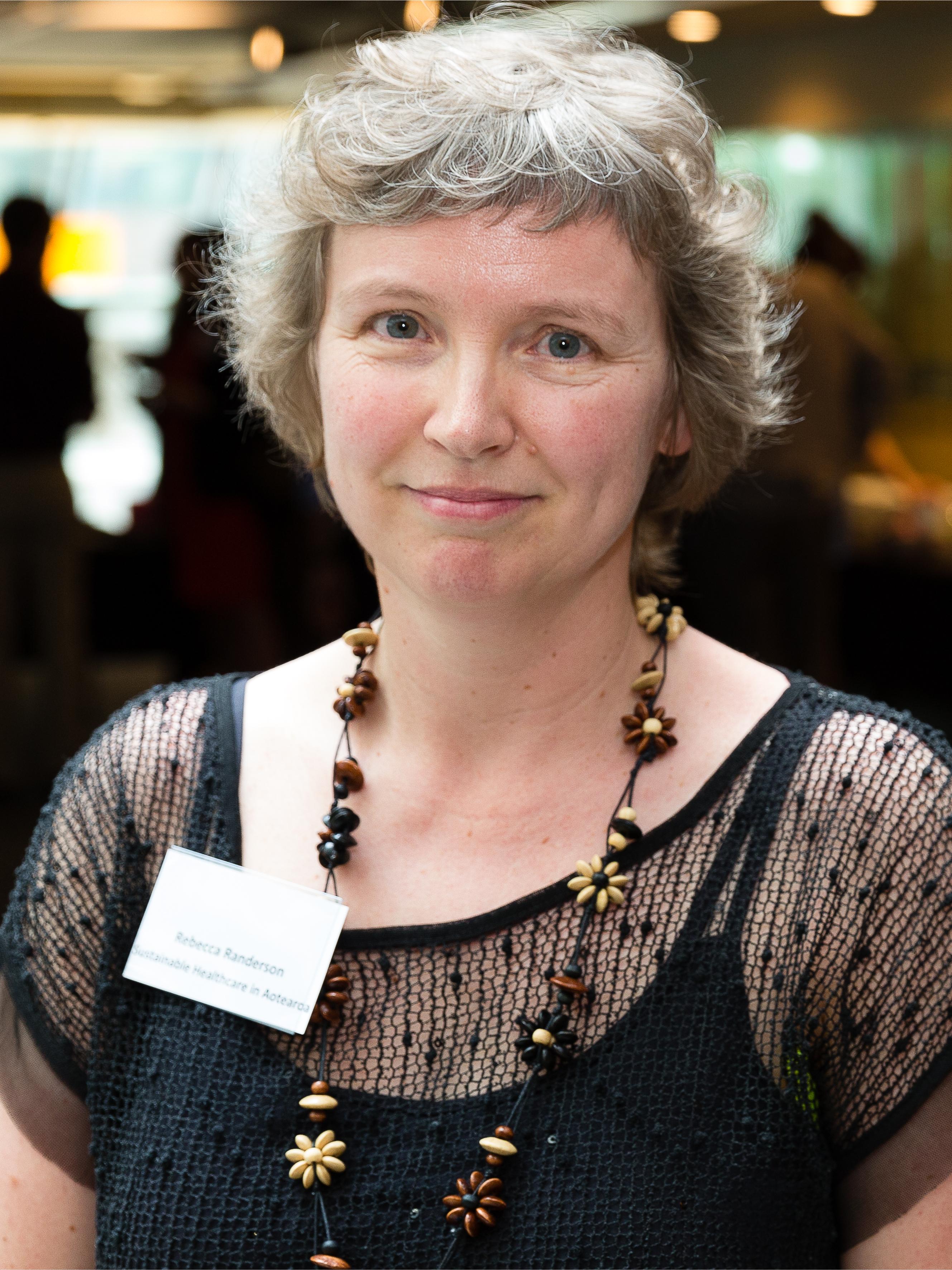



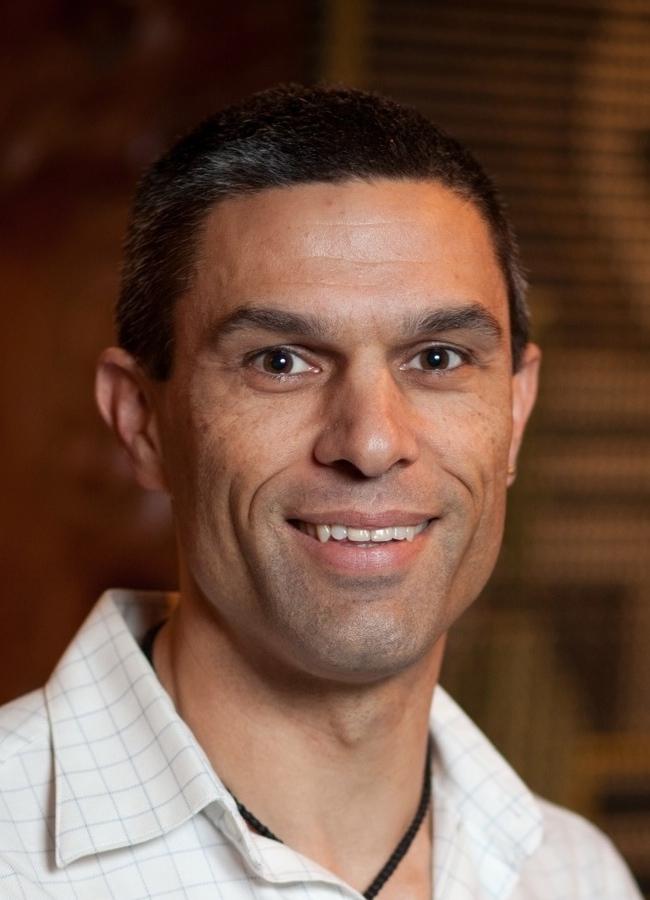
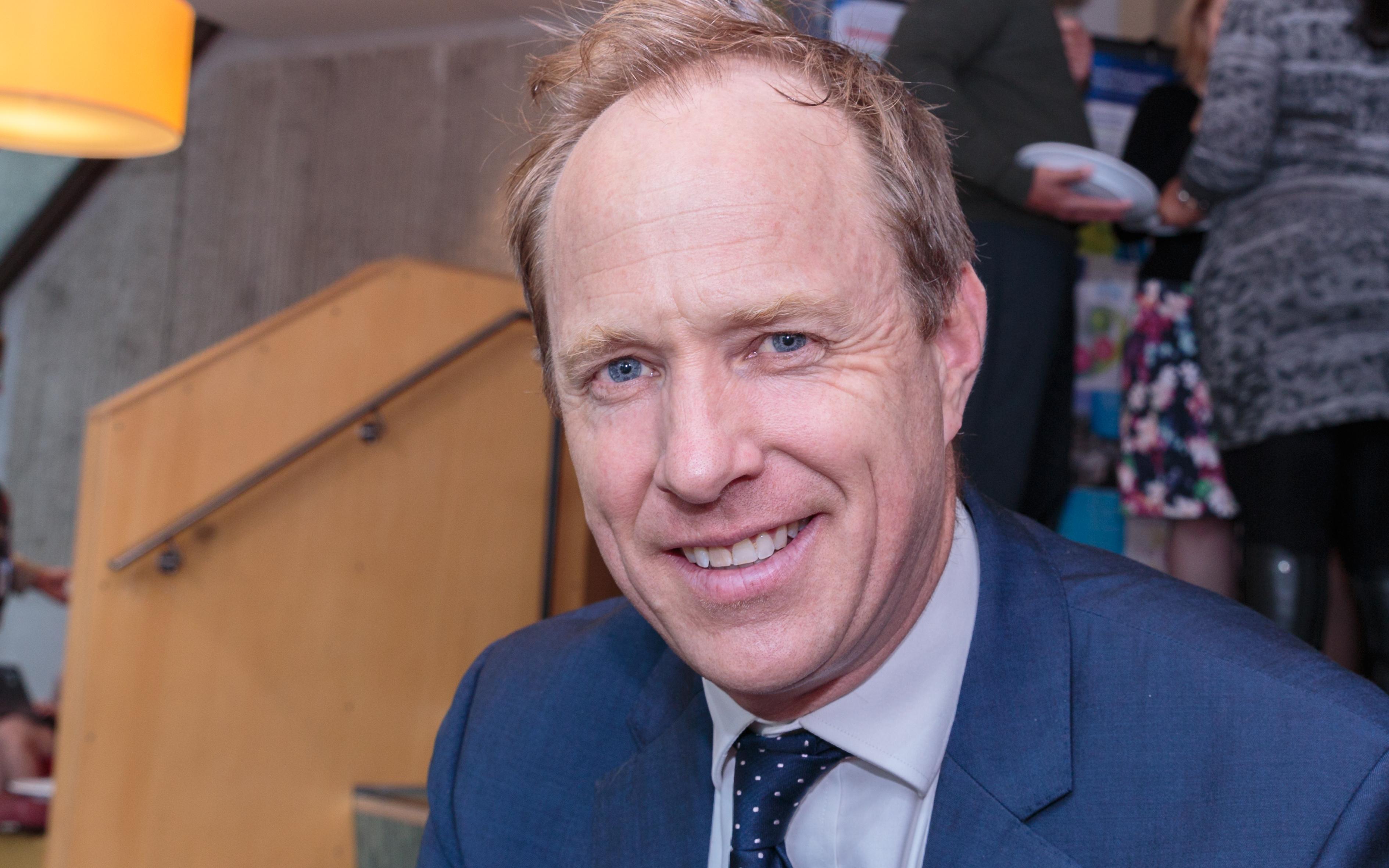




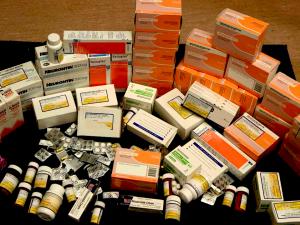

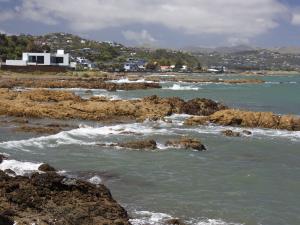




![Barbara Fountain, editor of New Zealand Doctor Rata Aotearoa, and Paul Hutchison, GP and senior medical clinician at Tāmaki Health [Image: Simon Maude]](/sites/default/files/styles/thumbnail_cropped_100/public/2025-03/Barbara%20Fountain%2C%20editor%20of%20New%20Zealand%20Doctor%20Rata%20Aotearoa%2C%20and%20Paul%20Hutchison%2C%20GP%20and%20senior%20medical%20clinician%20at%20T%C4%81maki%20Health%20CR%20Simon%20Maude.jpg?itok=-HbQ1EYA)
![Lori Peters, NP and advanced health improvement practitioner at Mahitahi Hauora, and Jasper Nacilla, NP at The Terrace Medical Centre in Wellington [Image: Simon Maude]](/sites/default/files/styles/thumbnail_cropped_100/public/2025-03/2.%20Lori%20Peters%2C%20NP%20and%20advanced%20HIP%20at%20Mahitahi%20Hauora%2C%20and%20Jasper%20Nacilla%2C%20NP%20at%20The%20Terrace%20Medical%20Centre%20in%20Wellington%20CR%20Simon%20Maude.jpg?itok=sUfbsSF1)
![Ministry of Social Development health and disability coordinator Liz Williams, regional health advisors Mary Mojel and Larah Takarangi, and health and disability coordinators Rebecca Staunton and Myint Than Htut [Image: Simon Maude]](/sites/default/files/styles/thumbnail_cropped_100/public/2025-03/3.%20Ministry%20of%20Social%20Development%27s%20Liz%20Williams%2C%20Mary%20Mojel%2C%20Larah%20Takarangi%2C%20Rebecca%20Staunton%20and%20Myint%20Than%20Htut%20CR%20Simon%20Maude.jpg?itok=9ceOujzC)
![Locum GP Helen Fisher, with Te Kuiti Medical Centre NP Bridget Woodney [Image: Simon Maude]](/sites/default/files/styles/thumbnail_cropped_100/public/2025-03/4.%20Locum%20GP%20Helen%20Fisher%2C%20with%20Te%20Kuiti%20Medical%20Centre%20NP%20Bridget%20Woodney%20CR%20Simon%20Maude.jpg?itok=TJeODetm)
![Ruby Faulkner, GPEP2, with David Small, GPEP3 from The Doctors Greenmeadows in Napier [Image: Simon Maude]](/sites/default/files/styles/thumbnail_cropped_100/public/2025-03/5.%20Ruby%20Faulkner%2C%20GPEP2%2C%20with%20David%20Small%2C%20GPEP3%20from%20The%20Doctors%20Greenmeadows%20in%20Napier%20CR%20Simon%20Maude.jpg?itok=B0u4wsIs)
![Rochelle Langton and Libby Thomas, marketing advisors at the Medical Protection Society [Image: Simon Maude]](/sites/default/files/styles/thumbnail_cropped_100/public/2025-03/6.%20Rochelle%20Langton%20and%20Libby%20Thomas%2C%20marketing%20advisors%20at%20the%20Medical%20Protection%20Society%20CR%20Simon%20Maude.jpg?itok=r52_Cf74)
![Specialist GP Lucy Gibberd, medical advisor at MPS, and Zara Bolam, urgent-care specialist at The Nest Health Centre in Inglewood [Image: Simon Maude]](/sites/default/files/styles/thumbnail_cropped_100/public/2025-03/7.%20Specialist%20GP%20Lucy%20Gibberd%2C%20medical%20advisor%20at%20MPS%2C%20and%20Zara%20Bolam%2C%20urgent-care%20specialist%20at%20The%20Nest%20Health%20Centre%20in%20Inglewood%20CR%20Simon%20Maude.jpg?itok=z8eVoBU3)
![Olivia Blackmore and Trudee Sharp, NPs at Gore Health Centre, and Gaylene Hastie, NP at Queenstown Medical Centre [Image: Simon Maude]](/sites/default/files/styles/thumbnail_cropped_100/public/2025-03/8.%20Olivia%20Blackmore%20and%20Trudee%20Sharp%2C%20NPs%20at%20Gore%20Health%20Centre%2C%20and%20Gaylene%20Hastie%2C%20NP%20at%20Queenstown%20Medical%20Centre%20CR%20Simon%20Maude.jpg?itok=Z6u9d0XH)
![Mary Toloa, specialist GP at Porirua and Union Community Health Service in Wellington, Mara Coler, clinical pharmacist at Tū Ora Compass Health, and Bhavna Mistry, specialist GP at Porirua and Union Community Health Service [Image: Simon Maude]](/sites/default/files/styles/thumbnail_cropped_100/public/2025-03/9.%20Mary%20Toloa%2C%20Porirua%20and%20Union%20Community%20Health%20Service%20in%20Wellington%2C%20Mara%20Coler%2C%20T%C5%AB%20Ora%20Compass%20Health%2C%20and%20Bhavna%20Mistry%2C%20PUCHS%20CR%20Simon%20Maude.jpg?itok=kpChr0cc)